JUST SOME THOUGHTS! I Don’t Really Like The “go From The Top Up” Advice On Drapery/clothes - If
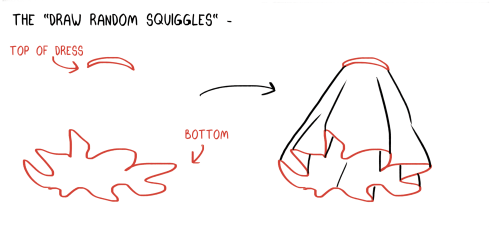
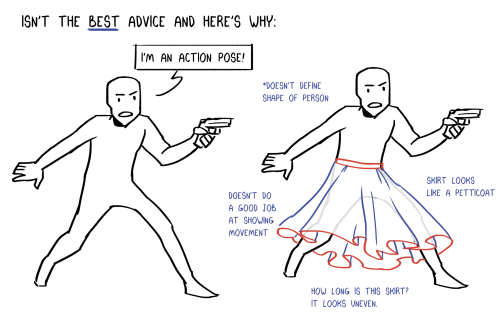
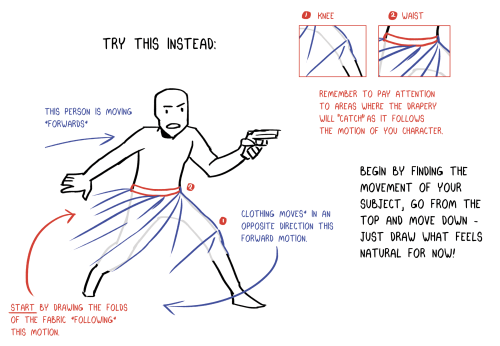
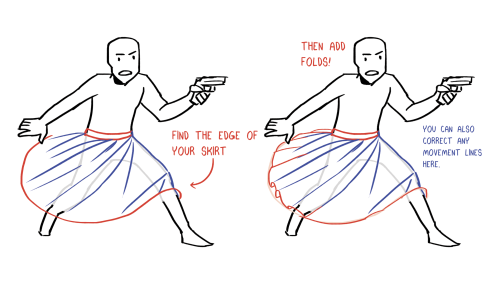
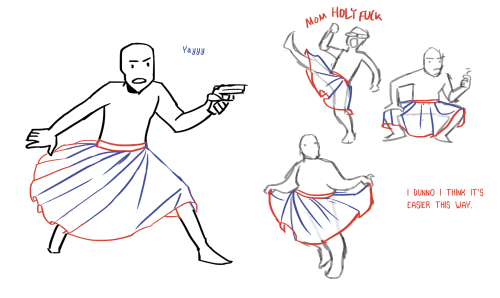
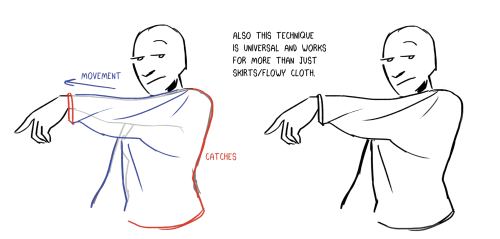
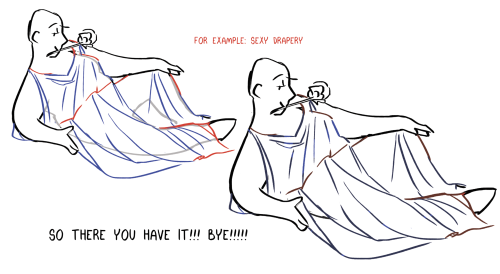
JUST SOME THOUGHTS! I don’t really like the “go from the top up” advice on drapery/clothes - if you’re having difficulty try it like this!
YES I see the typo… I’m so sorry folks… I was in a frenzied rush to make this…… and I’m too lazy to fix it……
More Posts from Whoframedramadhego and Others
FREE PALESTINE Fundraiser List

(Update 7/7: Asks and new messages temporarily closed. However, the Tumblr users on this list are free to message me at any time.)
For campaigns with under 1000 donations, go here.
For more extensive campaign lists:
Operation Olive Branch
Gaza Funds
Vetted Gaza Evacuation Fundraiser list
Here's a list of fundraisers from Palestinians who have reached out to me. I'm not Palestinian, but to the best of my knowledge, all campaigns listed have been verified by Palestinians on Tumblr. This list updates daily, so be sure to check back. If you follow me, follow these folks too.
If you can't donate, reblog.
LAST UPDATED 9/22
Less than a fifth funded:
#91 The Al Tibi family @mahmoudeltibi1 Nearly 12K!
#140 The Sharif family @amnehsharif10 Nearly 10,100!
(Reblogged) The Atalla family @mohammed-atallah @atalah-mohammed
(Reblogged) The Hor family @salahaldinhor STAGNANT FOR 6 DAYS
(Reblogged) Amal's family @amlanqar
A fifth funded:
A quarter funded:
(Reblogged) The Shamaly family @familydeea Nearly 24,800!
#125 The Alostaz family @ahmed-ostaz @rehamjawad33 @momenalstaz Nearly 23,600!
#196 The Aburass family @sameraburass @samerpal Nearly 1/3 funded!
(Reblogged) Walaa's family @ahmed79ss Nearly 12,800!
A third funded:
#112 The Shorbaje family @tahanishorbaje2 @tahanibaby Nearly 19,600!
(Second on this list) The Ismaeel family @m0hammed1 @m0hammed2
#231 The Abushammaleh family @bshaeromars-blog
(Reblogged) Ahmed's family @ahmed-ziad Nearly 10,800!
(Reblogged) Zaen and Yehya @mohammedshehab111 @hyamshehabnew Nearly half funded!
Half funded:
(Reblogged) The Sami family @eyadeyadsblog Nearly 11,100!
(Reblogged) The Shehab family @fahedshehab-new @danashehab @yehyashehab Nearly 57K!
#151 The Khalaf family @mahmoudkhalafff Nearly 31,300!
Two thirds funded:
#152 The Shaqoura family @lailashaqoura
Three quarters funded:
(Reblogged) Amira's family @ameera-anq Nearly 30,200!
#212 The Aldeeb family @mohammedaldeeb Nearly 43K!
Nearly complete:
#179 Issam Aziz's mother @haifaaziz98 1802 TO GO!
#182 The Saftawi family @nadasaftawi 1206 TO GO!
#218 The Alnabih family @ahmedalnabeeh11 @ahmed-nabeeh32 3451 TO GO! No longer accepting donations
(Reblogged) Ashraf's family @ashraf-baker 1224 TO GO!
(Reblogged) Aya's family @ayaalanqarsblog @ayalanqar 1764 TO GO!
#174 The Alanqar family @mohammedalanqer 9737 TO GO!
Complete:
I need to rip out my uterus and sacrifice it to the blood gods
Because I couldnt find a single post with ALL of the leaked Hazbin Hotel audition sheets, I made one my goshdang self.



















If you were to write a thesis on Vivziepop, what would you write about?

I may unironically publish this legitimately. Not just some blog post online, just a genuine review of our failures in mental health, media education, and online echo chamber culture bred out of the #relateable content mill of apps like TikTok.
There's nuance to all of this. It's not a one finger pointing at Vivziepop necessarily. But an acknowledgment of how her rise as an artistic content creator directly correlated to multiple systemic failures of society in regards to mental and physical health, education, economics, social liberties, and civil and governmental unrest over the last decade.
The pandemic in specific played a massive role in her ability to cultivate a foothold in animation and media. The lack of new content from any major studios, as well as the accessibility granted through venues like social media, added with the government imposes isolation of quarantine and the desperation to connect through parasocial relationships are merely what pushed her over that last hurdle.
The ideal human condition is to create. And when placed in this ideal, this is what she created. Taking advantage of chaos, uncertainty, and insecurity, she dug through the dredges of the internet's most unstable and susceptible people to get to where she is. Combing for people desperate for attention, catharsis, and community. It's why the fanbase (and even the critics) mirrors many high-control religious groups in tone and behavior.
There's so much more I could go into in regards to philosophy and even theology on the matter. But maybe I should just write.
happy autumn equinox everyone

kissing your f/o’s neck. you agree. reblog.

How to Write REALISTIC and SMOOTH Dialogue
In a story, dialogue is quite important, it helps the readers paint a picture of what's happening and the characters themselves. However, it can be difficult to avoid the unnaturalness and choppiness that comes with a lack of experience. But luckily, I have put together A LOT of advice on how you can get over that rockiness and improve!
*** KEEPING YOUR DIALOGUE REALISTIC, AND PACING ***
>> Keep your characters in character:
Dialogue is a remarkably quick way for readers to determine your character's personality. Thus, you want their speech patterns to remain fairly consistent so the audience won't get confused. If your character is more serious, then they will use less slang and perhaps a more impressive vocabulary. If your character is more relaxed, they will use more slang and compress the words. (such as "dunno," "kay," "y'know," etc.)
Basically, you want their tone to match their traits so the way that they talk is more realistic and personlized to themselves. If the way all your characters speak is the same, there's something wrong. A strong tip is to put yourself in your character's shoes and imagine how they would respond!
>> Take the situation into consideration:
This is another part of keeping your characters in, well, character. Different emotional situations will have a different effect on separate people, so make sure that you have an idea of how your character will act during stressful, irritating, and sad times.
If your character is normally cold, they will struggle if it comes to comforting other people because they have less experience in that field.
>> Don't take too long with their words:
Unlike when narrating something, most people talk just to get the idea across. They will be more specific and quicker with what they say. (This excludes any character who likes to talk a lot.) Unless it's on purpose, they won't dance around the topic. Think of when you casually chat with your friends; you're pretty unlikely to use certain words and/or phrases that might be common to use while narrating.
If you want to explain something complicated, instead of writing out a paragraph of just one person talking, use a question-and-answer prompt! This is where another character continuously asks related questions that get answered by another person, so you can indirectly reveal your explanation.
*** HOW TO WRITE A SMOOTHER CONVERSATION AND DIALOGUE TAGS***
>> Having a variety of dialogue tags:
This is a pretty basic thing to look out for if you're new to writing conversations. Using words like "said," every other sentence can easily make it feel choppy and robotic. Instead, use words like "murmured," "smirked," etc. to paint some emotion into their words. Additionally, vary the location of the dialogue tags! They don't all have to go after the statement, you can include something in the beginning or even the middle, too!
Examples:
Beginning - She tilted her head, "What are you talking about?"
Middle - "Oh," he blinked, "I actually never thought about that."
End - "Wait up!" She exclaimed loudly, waving her hands around.
>> Using no dialogue tags to create a smooth conversation:
Having too many tags can also overwhelm your reader--remember, sentence variety is a crucial part of writing--so you can always drop them if they're unneeded. This applies when your characters (two is the suggested amount) are talking back and forth in a pattern straightforward enough for the reader to understand who's talking without it having to be labeled.
Dropping dialogue tags in these moments can create a smoother atmosphere during the conversation because the reader only has to focus on the talking present.
*** USING SLANG, STUTTERS, FILLER WORDS, AND PAUSES ***
Human speech is often not perfect; when talking, we often make mistakes such as filler words, grammatically incorrect phrases, etc. Hence, for more natural-sounding dialogue, it's important to incorporate some of these.
>> Pauses and stutters:
When reading dialogue, we read it at a steady pace unless it's written otherwise. However, that steady pace can soon get too robotic and too smooth. Luckily, there are several ways to change this! You can use dialogue tags, (ex: she quickly spoke) commas, and ellipsis (...). These are often integrated when the character is hesitant, nervous, answering something, or when they need to admit something. The same idea applies to stutters--they're mainly used to demonstrate anxiousness, which can be found in varying situations.
>> Filler words and slang:
Filler words can really just be used where you see fit. They may be used in the situations I previously mentioned (because it shows someone stumbling over their words) but it's ultimately up to you!
Slang, just like everything else, should not be used too often, or it will seem forced and exaggerated. The point is to sound natural, and increasing amounts of repetitiveness can ruin it. It's also important to remember that in real life, our conversations move slower; when someone speaks, another person usually doesn't respond quite literally, right after. However, in writing, dialogue can actually often seem that way, which is why using tags and these imperfections of speech is pivotal for building a realistic conversation!
*** CONCLUSION ***
Lastly, a key point when writing dialogue is to ALWAYS read the conversations! Whether it be in your head or out loud, it can often help you catch anything that seems off! Additionally, like I mentioned at the very beginning, write dialogue from your character's perspective! Imagine yourself as them and how they/you would talk. Try to keep your dialogue tags, sentences, and word use varied to create a natural conversation!
If you were struggling before, I hope that this (extra) long guide was able to really offer you some insight and useful tips! If you read this far, thank you!
Happy writing~
3hks <3
My animation process (in a GIF!)

So you've learned the 12 principles of animation but don't know where to actually apply them? Fear not!! For here is my step-by-step process, very very condensed, into one singular giant GIF.
Hope it helps!
(You may need to open it in a new tab to read the text)
Internal conflict writing ideas
Not everything has to be fight scenes
—Losing something of emotional value and remembering its history and why it’s important to the character
—Reliving a traumatic event
—Running into an old friend who’s either completely changed since they’ve last seen each other or far too similar, leaving the character to wonder about how they’ve matured and grown compared to this other person
—Internally deciding if they should voice a fear or concern to the group, even if they might look silly or ridiculous doing so
—Friends vs family in terms of choosing who to follow and listen too
—Feeling unqualified to work on a project or be apart of the adventure
—Romantic feelings for someone they shouldn’t and dealing with how they should proceed internally. (THIS MEANS RIVALS OR FORBIDDEN ROMANCE. NOT ANYTHING ILLEGAL!!!)
—Thinking about mortality and death after being reminded of an late friend/family passing
—Being less talented at something years later when they used to be the best in that field
—Finding an old photo that carries much more emotional significance now than it did X years ago.
-
 pencilscars reblogged this · 1 week ago
pencilscars reblogged this · 1 week ago -
 starysprout liked this · 1 week ago
starysprout liked this · 1 week ago -
 this-is-gonna-hurt-me-inside reblogged this · 1 week ago
this-is-gonna-hurt-me-inside reblogged this · 1 week ago -
 this-is-gonna-hurt-me-inside liked this · 1 week ago
this-is-gonna-hurt-me-inside liked this · 1 week ago -
 mason-the-mosan reblogged this · 1 week ago
mason-the-mosan reblogged this · 1 week ago -
 duck-you liked this · 1 week ago
duck-you liked this · 1 week ago -
 eternalcyclicality reblogged this · 1 week ago
eternalcyclicality reblogged this · 1 week ago -
 ryuuseirune liked this · 1 week ago
ryuuseirune liked this · 1 week ago -
 mooncloudz liked this · 2 weeks ago
mooncloudz liked this · 2 weeks ago -
 agitowarrioroftheforest reblogged this · 2 weeks ago
agitowarrioroftheforest reblogged this · 2 weeks ago -
 asexual-thot reblogged this · 2 weeks ago
asexual-thot reblogged this · 2 weeks ago -
 marokra reblogged this · 2 weeks ago
marokra reblogged this · 2 weeks ago -
 small-ratchild reblogged this · 2 weeks ago
small-ratchild reblogged this · 2 weeks ago -
 orionisboundary liked this · 2 weeks ago
orionisboundary liked this · 2 weeks ago -
 small-ratchild liked this · 2 weeks ago
small-ratchild liked this · 2 weeks ago -
 agreekdemigod liked this · 2 weeks ago
agreekdemigod liked this · 2 weeks ago -
 flyingprisonalindustrialcomplex liked this · 2 weeks ago
flyingprisonalindustrialcomplex liked this · 2 weeks ago -
 coline7373 reblogged this · 2 weeks ago
coline7373 reblogged this · 2 weeks ago -
 iiraeth liked this · 2 weeks ago
iiraeth liked this · 2 weeks ago -
 nemira-the-mercenary reblogged this · 2 weeks ago
nemira-the-mercenary reblogged this · 2 weeks ago -
 secretdazedragon liked this · 2 weeks ago
secretdazedragon liked this · 2 weeks ago -
 wherenightmaresroost reblogged this · 2 weeks ago
wherenightmaresroost reblogged this · 2 weeks ago -
 deedeebubbles-g-o-i liked this · 2 weeks ago
deedeebubbles-g-o-i liked this · 2 weeks ago -
 akogarenohime liked this · 2 weeks ago
akogarenohime liked this · 2 weeks ago -
 the--pony-box reblogged this · 2 weeks ago
the--pony-box reblogged this · 2 weeks ago -
 mangomaestro liked this · 3 weeks ago
mangomaestro liked this · 3 weeks ago -
 imtiredofhavinganame liked this · 3 weeks ago
imtiredofhavinganame liked this · 3 weeks ago -
 whimstellar liked this · 3 weeks ago
whimstellar liked this · 3 weeks ago -
 beelzebutch reblogged this · 3 weeks ago
beelzebutch reblogged this · 3 weeks ago -
 dragon-in-the-watery-bowl reblogged this · 3 weeks ago
dragon-in-the-watery-bowl reblogged this · 3 weeks ago -
 transparentdetectivetale liked this · 3 weeks ago
transparentdetectivetale liked this · 3 weeks ago -
 onceuponapocalypse reblogged this · 3 weeks ago
onceuponapocalypse reblogged this · 3 weeks ago -
 onceuponapocalypse liked this · 3 weeks ago
onceuponapocalypse liked this · 3 weeks ago -
 canthugeveryzahhak reblogged this · 3 weeks ago
canthugeveryzahhak reblogged this · 3 weeks ago -
 wackadoojibbering reblogged this · 3 weeks ago
wackadoojibbering reblogged this · 3 weeks ago -
 chimericarchitect liked this · 3 weeks ago
chimericarchitect liked this · 3 weeks ago -
 bluesmileeface liked this · 3 weeks ago
bluesmileeface liked this · 3 weeks ago -
 dangitdunsparce liked this · 3 weeks ago
dangitdunsparce liked this · 3 weeks ago -
 tiwaztyrsfist reblogged this · 3 weeks ago
tiwaztyrsfist reblogged this · 3 weeks ago -
 g-rp-echibi reblogged this · 3 weeks ago
g-rp-echibi reblogged this · 3 weeks ago -
 gay-frog-is-an-understatement reblogged this · 3 weeks ago
gay-frog-is-an-understatement reblogged this · 3 weeks ago -
 graviconscientia liked this · 3 weeks ago
graviconscientia liked this · 3 weeks ago -
 castiels-big-supernaturals reblogged this · 3 weeks ago
castiels-big-supernaturals reblogged this · 3 weeks ago -
 amusedmuralist reblogged this · 3 weeks ago
amusedmuralist reblogged this · 3 weeks ago -
 andoniel-giraffewaffle reblogged this · 3 weeks ago
andoniel-giraffewaffle reblogged this · 3 weeks ago -
 ozzynka reblogged this · 3 weeks ago
ozzynka reblogged this · 3 weeks ago -
 ozzynka liked this · 3 weeks ago
ozzynka liked this · 3 weeks ago

Creature of the night ♤ Ram ♤ 21 ♤ She/They ・They/Them ♤ https://ramadhego.carrd.co/
25 posts